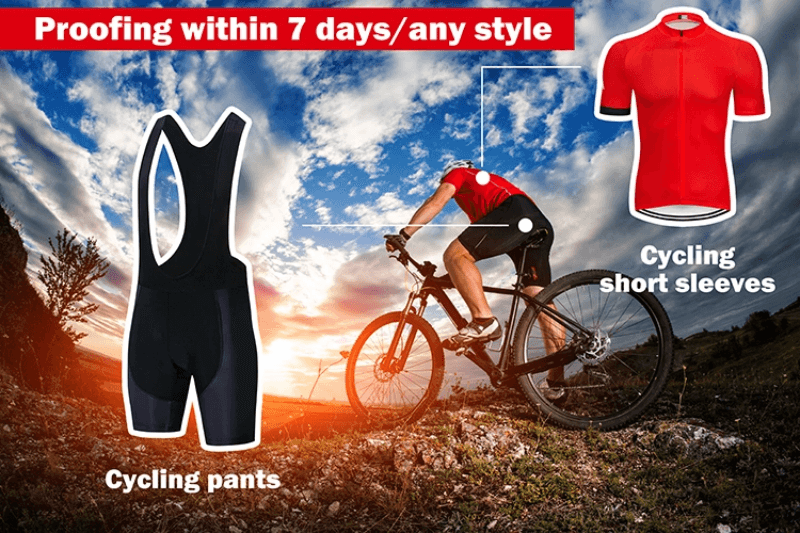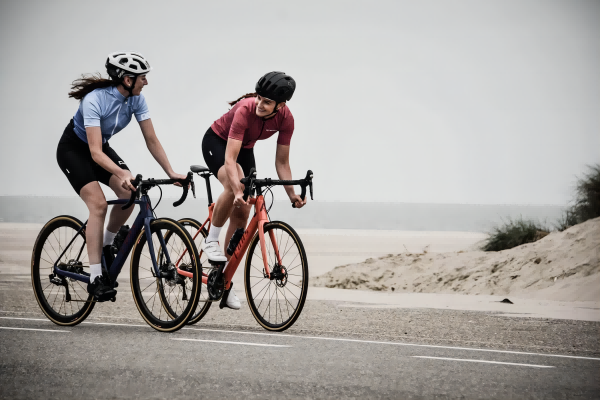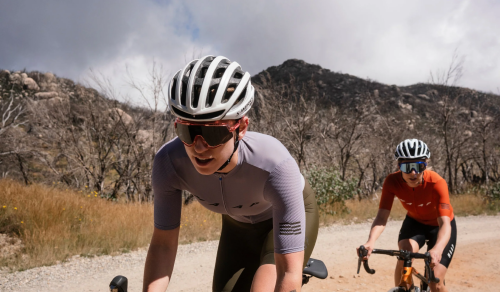Cycling Clothing: A Comprehensive Overview of Comfort, Performance and Style on Two Wheels
Cycling began as a simple means of transportation but has since evolved into a beloved sport and a recreational activity enjoyed by millions of people around the world. Whether you are an experienced cyclist, a professional racer or a weekend warrior, the importance of the clothing you wear when riding a bike is undeniable. Cycling clothing (commonly known as cycling clothing) is more than just a fashion statement; it enhances your performance, ensures you are comfortable and provides you with the necessary protection when you are out on the trails.Together we take a look at all aspects of cycling apparel including its history, components, technological breakthroughs and how to choose the right gear for your specific requirements.

Cycling clothing has gone a long way from the early days of the bicycle. The evolution of cycling wear has been going on for quite some time. At the end of the 19th century and the beginning of the 20th century, cyclists may be seen wearing woolen jerseys and shorts, which were the typical sporting attire of the period. These clothes were cumbersome, there was a tendency for them to collect moisture, and they gave very little flexibility. The need for apparel that was both more utilitarian and more comfortable increased in tandem with the development of cycling as a sport.
Synthetic materials started to change sports clothing about the middle of the 20th century by providing alternatives that were lighter, more breathable, and dried more quickly. During the 1970s, Lycra, which is often referred to as spandex, emerged as a revolutionary material that offered the requisite flexibility and fit for bicycle sports. In addition, during this time period, padded shorts were introduced, which substantially enhanced the level of comfort experienced during extended rides.
The cycling apparel that is available today contains cutting-edge fabrics and technology that are meant to maximize both performance and comfort. Fabrics that wick away moisture and designs that are aerodynamic are just two examples of the contemporary cycling clothing that is designed to fulfill the needs of riders of all different sorts.
Individual Components
That Make Up Cycling Wear Cycling wear is made up of a number of essential components, each of which was developed with a particular purpose in mind. An in-depth examination of these components is warranted:
1. Jerseys Cycling jerseys are constructed from materials that are lightweight and breathable. These materials drain sweat away from the body, allowing the cyclist to remain chilled and dry. There is a wide range of styles available for them, including alternatives with short sleeves, long sleeves, and no sleeves at all. In most cases, jerseys are equipped with a front zipper that allows for ventilation and rear pockets that may be used to store critical items such as energy gels, food, and tools.
2.Bib shorts and shorts in general
When worn for extended periods of time, cycling shorts are intended to enhance comfort and limit the risk of chafing. They are constructed from fabrics that are elastic and form-fitting, such as Lycra, and they include a cushioned insert that is referred to as a chamois. This insert cushions the sit bones and reduces pressure on places that are potentially sensitive. As a result of their improved fit and comfort, bib shorts are favored by a significant number of cyclists. This is because they are able to maintain their position more effectively than conventional shorts.
3. The Foundational Layers
For the purpose of controlling the body’s temperature and regulating moisture levels, base layers are worn below jerseys and shorts. When the temperature is warm, base layers that are lightweight and drain away moisture serve to keep the skin dry. On the other hand, when the weather is cold, thermal base layers give insulation and warmth.

4. Outerwear Jackets, vests, and windbreakers are typical examples of outerwear for cyclists. These items are meant to provide protection from wind, rain, and chilly weather. The majority of the time, these clothes are constructed from fabrics that are water-resistant, breathable, and lightweight. This ensures that riders are able to remain dry and comfortable even while dealing with poor weather conditions.
5.Gloves Cycling gloves provide the wearer a better grip, more control, and protection for their hands. There are many different kinds available, such as gloves that do not have fingers for use in warm weather and gloves that have fingers for use in cold weather. While riding over long distances, having padded palms may assist absorb shock and prevent hand strain.
No. 6: Socks and footwear
Socks designed specifically for cycling are constructed from materials that wick away moisture, ensuring that the feet remain dry and comfortable. In addition to providing support in the appropriate areas, they are intended to fit snugly. Cycling shoes are another essential component, since they provide a rigid sole that facilitates the transmission of power to the pedals in an effective manner. Road riding, mountain biking, and commuting are all distinct types of cycling that may be done with them.
7. Eyewear and protective masks
Helmets are an important component of safety systems since they provide protection in the case of a collision. The most up-to-date bicycle helmets are lightweight, have enough ventilation, and often have designs that are aerodynamic. Eye protection, such as sunglasses or lenses that are transparent, shields the eyes from harmful ultraviolet (UV) rays, wind, dust, and insects.
The Latest Technological Developments in Cycling Garments
Over the last several years, the cycling gear business has seen considerable technical improvements that have been done with the intention of improving performance, comfort, and safety. Included among the most noteworthy developments are the following:
1. Fabrics that are able to wick away moisture
Advanced synthetic materials like as polyester and nylon are designed to drain moisture away from the skin, so facilitating rapid evaporation and ensuring that the rider remains dry. In addition to preventing chafing, this helps to regulate the body’s temperature.
2. Designs that are aerodynamic
The use of aerodynamic cycling clothing helps to minimize drag and enhance efficiency, which is especially beneficial for cyclists who compete. The clothes are intended to have a close fit and have smooth, seamless surfaces in order to reduce the amount of air resistance they experience.
3.the Technology of Compression
In addition to providing support for the muscles, compression garments also help minimize tiredness by improving blood circulation and reducing the amount of muscular vibration. The use of compression shorts, jerseys, and socks is common among cyclists who compete in endurance events.
4. Insulation against the heat
Thermal textiles eliminate the need for additional bulk while providing insulation for riding in cold conditions. Materials like as merino wool and synthetic mixes are good for winter riding because they provide warmth, breathability, and the ability to drain away sweat.
5. Elements That Are Reflective
Cyclists should always put their safety first, but this is particularly true when they are riding in low-light settings. Increasingly, reflective materials and high-visibility colors are being used into cycling apparel in order to improve visibility and thereby lessen the likelihood of accidents occurring.
Selecting the Appropriate Cycling Garments
The selection of the appropriate cycling apparel is contingent upon a number of criteria, such as the sort of cycling you engage in, the weather conditions in which you cycle, and your own personal tastes. With the following advice, you will be able to make more educated decisions:
1. Think About the Amount of Cycling You Do
Your choice of clothing are going to be influenced by the sort of riding that you undertake. When it comes to bicycles, road riders may place a higher priority on aerodynamic designs and lightweight materials, while mountain bikers may choose textiles that are more robust and resistant to deformation. Gear that is weather-resistant, adaptable, and can easily transition from the bike to the workplace is something that commuters could search for.
2. Give an emphasis on comfort
To have a riding experience that is pleasurable, comfort is essential. Try to choose clothing that have seams that are flat, materials that are comfortable, and a good fit. You should experiment with a variety of brands and styles to see which one is most suitable for your body type and riding style.
3. Adapt Yourself to the Climate
Put on clothing that is suitable for the weather circumstances that you will be experiencing. The use of layers is a practical strategy that enables you to adapt your clothes in response to changes in temperature. Make an investment in base layers, jerseys, and outerwear of excellent quality so that you can remain comfortable in a variety of weather situations.
4. Put your money at quality.
In the long term, it is beneficial to make an investment in high-quality cycling clothing, despite the fact that it may be tempting to go with less expensive choices. Garments that are well-crafted are more durable, perform better, and provide more comfort and protection than those that are poorly built.
5. Protection From Danger
Wearing clothing that has built-in safety features, like as reflective materials and bright colors, is particularly important if you ride in situations when there is little to no light. It is essential for your safety on the road that you have visibility.

Final Thoughts
In addition to its aesthetic value, riding apparel is a crucial component of the cycling experience since it provides a number of other advantages. The appropriate bicycle clothing may make a major impact in your rides, whether it is in terms of improving performance, assuring comfort and safety, or boosting comfort. When you have a thorough awareness of the history, essential components, and technical breakthroughs in cycling clothing, you will be able to make educated decisions that are tailored to your specific requirements and tastes. The appropriate cycling apparel will enable you to ride with self-assurance and pleasure, regardless of whether you are conquering a difficult mountain path, competing on the wide road, or commuting through the city.



